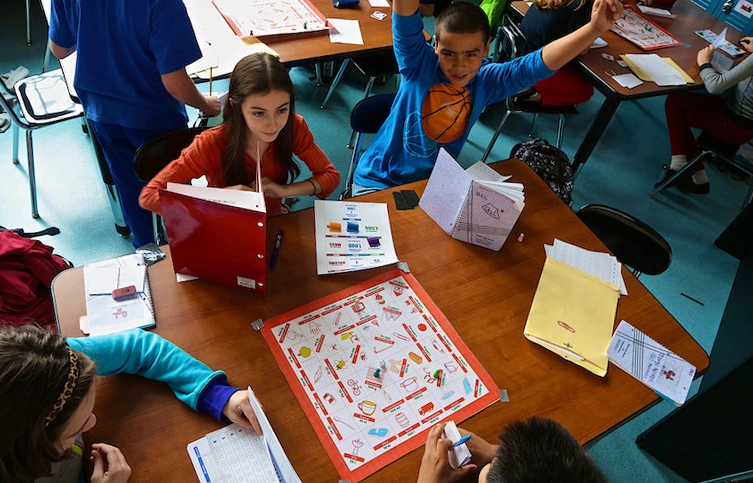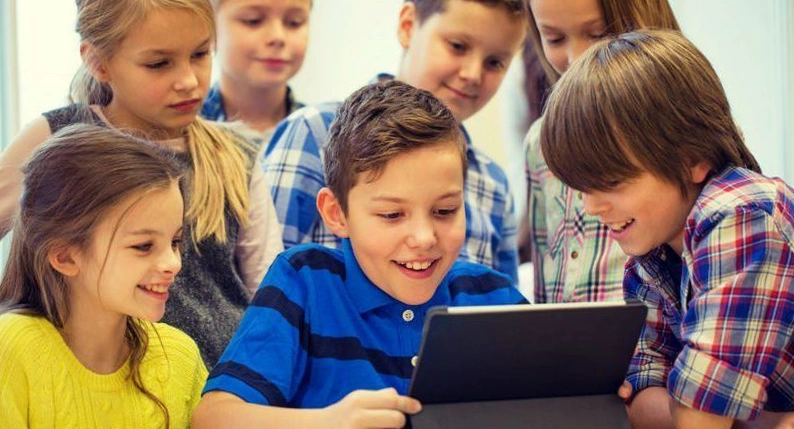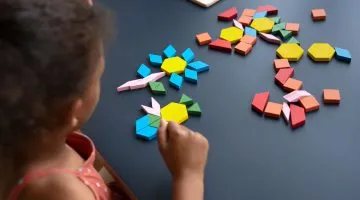The Power of Gamification in Education
Updated on January 5, 2024
Many students play video games regularly in their free time. The majority of video game players will never give up whenever they fail a level until they progress to the next one. Such failures encourage collaboration, assessment, and learning as kids have to ask for help and can learn something new. Discover ways to use gamification in education to redesign and supercharge a blended learning experience in your classroom.
What Is Gamification in Education?
Gamification in education is a methodology that adopts game-based mechanics and game principles in a non-game context to transform standard academic components. By introducing game thinking activities into a learning system, teachers can engage students and promote learning.
Gamification endeavors to develop a game out of learning by theming the classroom components into a game metaphor. Teachers can pick a theme such as space battles, medieval times, secret/spy agents, fantasy mystic, and military battles. Teachers and learners can also refer to everything with game terms like student=player, class party=game reward, assignment=quest, and grade=quest points.
8 Benefits of Gamification in Education
Teachers and learners can feel the importance of gamification in education because the approach eases the pain of teaching and learning certain content. Learners are also motivated to enjoy the experience of using new learning models. Here are some advantages of gamification in education:
1. It eases the pain of training
It is common for learners to begin associating learning with boring things or an obligation to be done. With gamification, teachers can prepare more contextualized and engaging lessons. Gamification also helps students see sense in whatever they are taught and enjoy the entire learning process.
1:1 Math Lessons
Want to raise a genius? Start
learning Math with Brighterly
 Let’s start learning Math!
Let’s start learning Math!
2. It helps in cognitive development
In their research, Blumberg and Fisch established that games involving components that require critical thinking and problem-solving improve students’ ability to process and retain information. Most educational games are listed in this category.
With technological advancement, the process of gamified learning has improved, enabling teachers to leverage cognitive awareness to learners using high-tech video games with the following benefits:
- Improve 4-D awareness
- Improve mental rotation abilities, like viewing objects from numerous viewpoints
- Speed up and create more accurate attention allocation
These valuable cognitive skills gained from video games become lasting and can help learners succeed in other domains like STEM subjects.
3. Gamification stimulates persistence
When students play together, they feel challenged. Therefore, students continue to play to outshine one another, whether they win or lose. If a child wins, they will be encouraged to advance to the next stage. The more a player progresses, the more the game becomes tougher and interesting.
If a student is losing in a game, they have an opportunity to try once again and prove they can win. The reason is that human beings learn from their mistakes. A human brain develops through observation, errors, and trial. Therefore, thanks to gamification, students have opportunities to attempt again and learn from their mistakes.

4. It helps to measure students’ performance
Traditional methods of measuring students’ performance that were used by teachers over the years have often been time-consuming. Typically, measuring performance requires an evaluation which can be carried out after two months of teaching a concept or analyzing an assignment when it’s completed.
Platforms like Quizalize however allow teachers to gather real-time, in-depth data on each and every learner. When a student takes a curriculum-alligned quiz on the Quizalize platform their results (including time taken to answer each question, which learning objectives have been mastered/not mastered and overall scores) are immediately displayed in the Quizalize Mastery Dashboard. Teachers can for the first time have a complete overview of their students’ – and class’s – performance in mere seconds. With Quiz Maker, teachers can easily create customized tests that align with their curriculum, providing a fun and engaging way to assess student understanding and track progress.
When teachers apply gamification in education, learning outcomes change. Both teachers and learners can monitor their performance using a transparent system and technological solutions that keep everyone in a classroom constantly updated.
5. It helps accept errors
Gamification in education encourages learners to stay on track whenever they make errors. One of the gamification examples in education is a game with a mission where a learner begins the process by dropping points. This type of game helps students to remain tolerant whenever they make mistakes. A learner can redeem their performance on the second or third attempt.
Gamification is more effective than the normal learning process where a student makes errors that cost more points. A student’s reputation can be affected by many errors and they can resort to copying or googling answers because of fear of doing an assignment wrong and losing points.
6. It improves focus
Many students face challenges when studying, especially if tasks require multitasking skills. Teachers bombard students with information that can overload the mind and interfere with the student’s concentration ability in the classroom.
Gamification helps students prioritize and handle class tasks according to each exercise’s importance. This skill can be beneficial in adult life. The experience will help a student manage numerous family and professional matters according to the urgency and importance of duties.
1:1 Math Lessons
Want to raise a genius? Start
learning Math with Brighterly
 Let’s start learning Math!
Let’s start learning Math!
7. It improves the integration process between theories and practice
When a learner begins to play, applying theoretical knowledge at every stage of the game, the approach will make sense. Therefore, a learner has to master the entire process from the beginning and play games acutely to earn more points.
In education, a challenge always comes when teachers combine theory and practice. Many students face challenges understanding the application of theoretical knowledge to make sense of reality. Therefore, gamification in education helps teachers facilitate the integration of math topics seamlessly.
8. It motivates learners
Students can be bored in the classroom to the extent of being unbothered to picking up a pen or book when it falls to the floor. The same student when allowed to play a game on a computer or in the field will stop at nothing to win. This happens because games drive high levels of motivation in players.
A study conducted on video gaming discovered three motivational factors that keep players trying again and again:
Achievement: Players want to excel and showcase mastery of the challenges presented by the game.
Immersion: Players are motivated to discover new game aspects and develop personal experiences through exploration and role play.
Social factor: Players are motivated by team building and relationships involved in the games.
Gamification in the classroom combines these factors to motivate learners to continue striving and not give up when the going gets tough.
Should Gamification Be Used in Online Education?

There are many ways teachers can apply gamification in online courses, which can impact online learners’ intellectual growth. Some significant benefits of game-based learning:
- Better learning experience: If learners enjoy and have fun in online classes, gamification will encourage more learning and promote students’ engagement, which leads to a rise in students’ retention rates and recall.
- Prompt behavioral change: Teachers can use gamification to redirect the behavior of some students with behavior disorders. The use of behavior intervention games can address and change behavioral disorders and help discover new ways of reinforcing positive behavior.
- Addresses learning needs: Gamification, when used in online courses, helps fulfill many online students’ learning needs. Therefore, students develop numerous skills like problem-solving, improvisation, negotiation skills, soft skills, and more.
For tutors to succeed in instilling gamification in online math learning, it would be best to develop an approach that:
- Challenges learners
- Teaches learners all the required knowledge
- Engages learners through fun
- Successfully captures all learners’ attention
You can try the best online gamification approach to learning on Brighterly.com, a platform which provides a well-structured monitoring system to help all instructors monitor learners’ performance levels and successfully capture learners’ attention with high-quality playful tasks. We encourage learners and instructors to register at Brighterly to enjoy numerous gamification benefits.
Conclusion
Gamification in education is a new concept to introduce to your classroom. It helps teachers and students to share accomplishments. Additionally, it motivates and drives the growth and development of learners.












